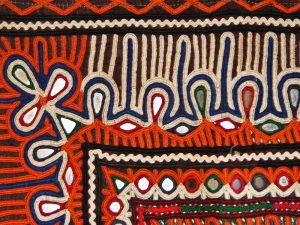The Rabari are nomadic tribes that migrated from Rajasthan centuries ago. The Rabari women are known for producing gorgeous and impressive embroidery which is emblematic of their nomadic life. Rabari embroidery is a pictographic representation and symbolic of the mythology, rituals, culture, and life of Rabaris.
The Rabaris are subdivided into groups which have distinguishing hand embroidery vocabulary of the composing the chain stitch, the back stitch, and herringbone. Mirrors of all shapes and sizes are liberally utilized. They use codis (beads) and thread fingers to edge the corners. The Rabaris produce native embroidery and garments on a massive scale. Given their nomadic nature, they also believe in ornamenting their cattle and homes.
Amongst the Rabaris, men and women have a very different style of traditional wear. The subgroups of Rabaris are distinguished with subtle differences in their traditional attire, weaving and embroidery. Usually, Rabari women can be seen wearing a three-part ensemble consisting of a tubular woollen skirt or a pachhedo along with a backless blouse called kapadun. The men mostly wear a white cotton dhoti. Both the sexes wear jewellery made from silver metals and other ornaments which are mostly crafted by people from their own community.








